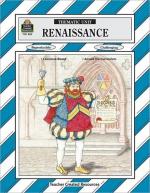|
This section contains 456 words (approx. 2 pages at 300 words per page) |

|
The same year that Andreas Vesalius published his epoch-making On the Architecture of the Human Body, (1543), he produced a more concise version (or Epitowe), intended for the student dissector. His approach in that text is similar to his fuller treatment, but more direct, less detailed, and lacking, the many expensive woodcuts that made the Architecture so costly. The following section from, the preface to Epitome explains why Vesalius thought that such a book was needed.
It is a charge to be laid most gravely at the door of the mob of physicians that they perform their duty so carelessly in distinguishing the parts of the human body that not even enumeration is made use of in learning them. For when, beyond the function and use of each part; its location, form, size, color, the nature of its substance, the principle...
|
This section contains 456 words (approx. 2 pages at 300 words per page) |

|




